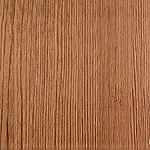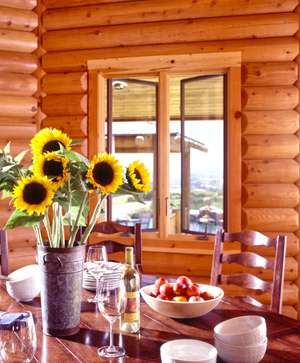Wood Species
We provide several wood species options for our log home packages, shown below. Of course, if you have a wood species in mind that you have your heart set on, we're happy to accommodate special requests. We want our log homes to be a perfect fit for our clients, so while the wood species below are the standard, they certainly are not the only species we can work with. We have simply found these species to provide a good balance of aesthetics, economy, strength and stability - qualities that make for a beautiful and long-lasting log home.
Eastern White Pine |
||
|
|
(Standard) Economical and very stable, white woods include regional evergreen species Eastern White Pine or Western White Woods. These woods have a natural light color, are our most popular choice, and are also a great value. Keep in mind that these woods can be stained to almost any color you desire for your log home. Botanical Name: Pinus strobus |
|
Western Cedar |
||
 |
Botanical Name: Thuya plicata |
|

|
Eastern White Pine ExampleEastern white pine is our most commonly used wood species. It grows relatively quickly and is locally available where our primary manufacturing facility is located (Claremont, NH). And it has great strength and resilience. It does not warp as much as some other wood species (such as Southern Yellow Pine.) It has a fair amount of knots in it which works very well for log homes that want to highlight the rustic "camp like" feel of a log home. Of course, it also works just as well in a home with modern decor and styling. The natural color of this wood is more pale and neutral than the more reddish cedar. |
|

|
Western Cedar ExampleWestern Cedar is typically more expensive than Eastern White Pine, but it offers some nice benefits. For example, the knots in western cedar are usually smaller and farther between. The wood is naturally insect resistant, which is a very desirable trait. In addition, the natural color of the wood has far more of a reddish tone to it, yielding a very warm and inviting look to your log home. |



